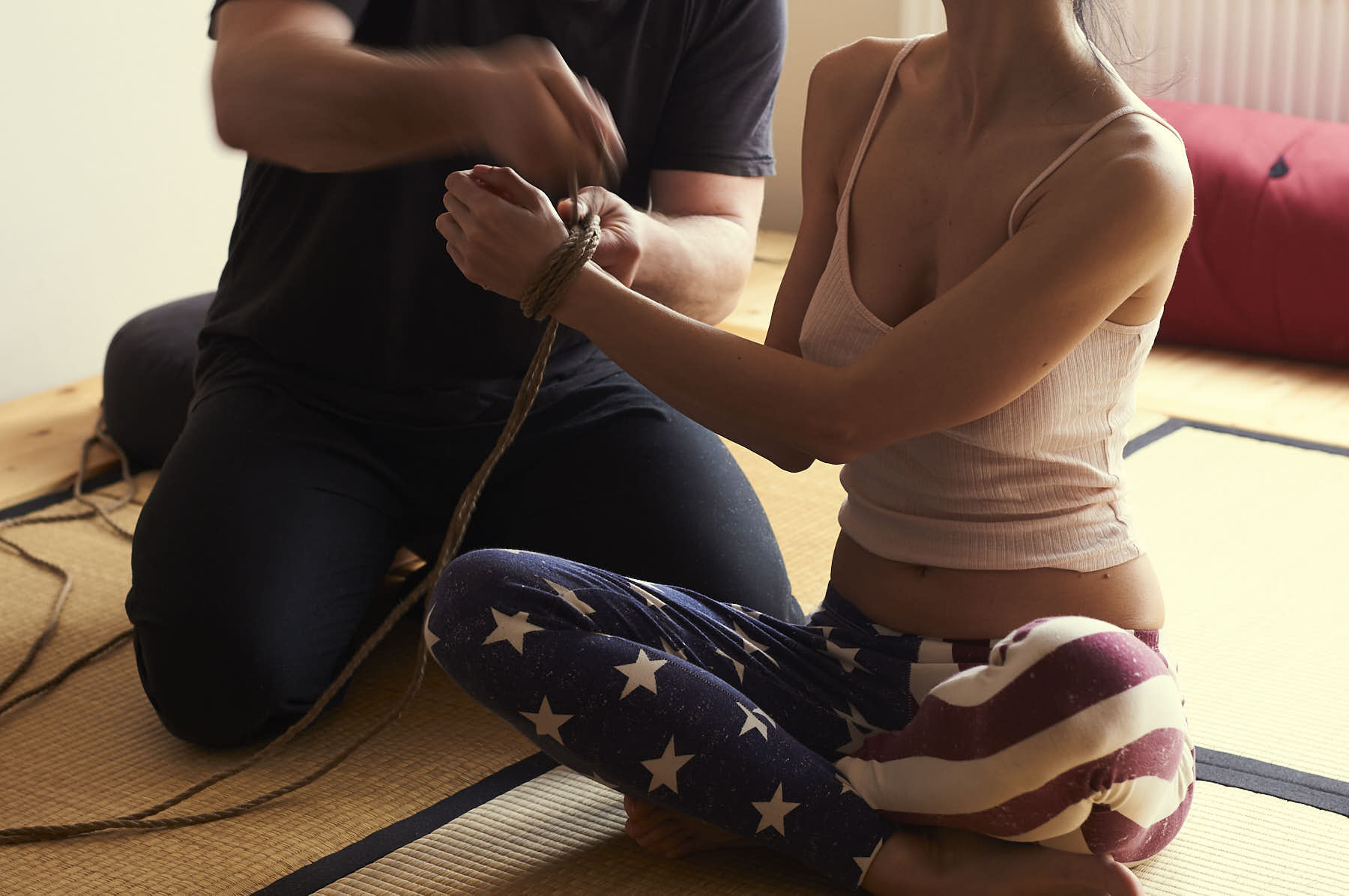If you are new to rope bondage and want to explore in a mindful way and possibly avoid bad experiences, how do you go about it? Below are my very best tips for rope bondage beginners! :)
Think about your intention
When you know your intention, it’s easier to find out what you want, what you don’t want, and who you’re compatible with.
If you don’t know yet, don’t rush into anything, instead: observe. Look at pictures/texts/videos, attend rope jams and events, watch real rope sessions and try to notice what feel good for you. And not only how the rope is, but also: what kind of communication and interaction do you want? What turns you on?
Slow down
Slow down! Learn how your body reacts to the smiple ties before increasing the intensity.
Define what your comfort zone is (the amount of impact you are pretty sure you can handle) and communicate that as your limit. For example, this sounds like a reasonable agenda for a first session to me: short time, 10-15 minutes; floor work, no suspension; body parts: the legs, not the neck, just 1-2 ropes, no gagging and no blindfolding.
Going slow is a good rule of thumb. You can always be tied up again, but you won’t be able to undo something that was too much. Take your time to integrate, up to a few days. You will feel how your body and mind react, what feelings come up afterwards.
Increase the intensity slowly, adding only one new “edgy” thing at a time.
Show up in the process
Learn from the beginning to show up in the process. By this I do not mean that you should take control of the session. By showing up, I really mean expressing yourself, how you feel, what is happening inside you: physically, emotionally.
Develop your way of expressing yourself according to what feels natural to you, so that you can keep your rigger in the loop about how you are doing, using your tone of voice, breathing, moaning, movements… letting them know when you are close to the limit. In general, if you don’t show up in the process, you run the risk of your partner doing too much or too little.
Develop presence in your body
There are many reasons why we want to be present during the rope session, including noticing your own pleasure, feeling your partner, developing communication between you two, as well as looking out for your own safety.
Recognizing different types of body signals and knowing how your body reacts to ropes allows you to judge for yourself how urgent one symptom or another is for you; what is dangerous and what is not.
Stay patient
If your partner is also a beginner and is just starting to learn, they will need a lot of your support and patience. Making mistakes and awkward moves is part of learning process. Be patient with yourself and your rigger. The intimacy of effortless understanding on ropes is not something that comes overnight. Rather, it comes as we grow together over time, showing up as our authentic selves and supporting each other.
Assume your role
If you are the one being tied, concentrate on being tied. Even if you like to switch. Do not try to combine the two roles. Focus on what you are feeling and don’t try to observe the knots or give advice to your partner. In other words: assume your role!
Never underestimate the effect that the rope has on you!
Take some time to rest after the class or session. You may feel tired and heavy, or high and lightheaded, dizzy, etc. It is very important to take care and be considerate of each other after this experience, even if you have not done anything so challenging. Sometimes we are not aware of what it did to us right away, but we may feel it later. This is especially true for people in ropes.
It is better to take time to rest and integrate and slowly come back to full awareness before driving or using public transport.
Remember: rope can be very powerful!
Enjoy your rope journey and stay safe!
